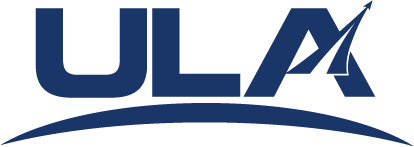News Archive
United Launch Alliance Successfully Launches 51st Delta II Mission for NASA
Delta II OCO-2 Mission Overview Brochure
Vandenberg Air Force Base, Calif., (July 2, 2014) – A United Launch Alliance (ULA) Delta II rocket carrying the Orbiting Carbon Observatory-2 (OCO-2) payload for NASA lifted off from Space Launch Complex-2 at 2:56 a.m. PDT today. This launch marks the 51st Delta II mission for NASA and Delta II’s return to flight as the first of two planned Delta II launches this year, and also the seventh ULA launch of 2014 and the 84th since the company was formed.
“Congratulations to the NASA Launch Services Program team, JPL and all of our mission partners on the successful launch of the OCO-2 satellite,” said Jim Sponnick, ULA vice president, Atlas and Delta Programs. “It is our honor to launch this important mission that will gather the scientific data to better understand planet earth.”
The OCO-2 mission was launched aboard a Delta II 7320 configuration vehicle featuring a ULA first stage booster powered by an Aerojet Rocketdyne RS-27A main engine and three Alliant Techsystems (ATK) strap-on solid rocket motors. An Aerojet Rockedyne AJ10-118K engine powered the second stage. The payload was encased by a 10-foot-diameter composite payload fairing.
“In addition to OCO-2, NASA has selected ULA to launch three more Delta II rockets in the coming years. The Soil Moisture Active Passive (SMAP) mission will launch from Vandenberg Air Force Base later this year,” said Sponnick. “We look forward to working with NASA on the upcoming Delta II missions and other future launch campaigns.”
Orbiting Carbon Observatory-2 (OCO-2) will be NASA’s first dedicated Earth remote sensing satellite to study atmospheric carbon dioxide (CO2) from space. OCO-2 will be collecting space-based global measurements of atmospheric CO2 with the precision, resolution, and coverage needed to characterize sources and sinks on regional scales. OCO-2 will also be able to quantify CO2 variability over the seasonal cycles year after year.
ULA's next launch is the Delta IV AFSPC-4 mission for the Air Force, scheduled for July 23 from Space Launch Complex-37 from Cape Canaveral Air Force Station, Florida.
With more than a century of combined heritage, United Launch Alliance is the nation’s most experienced and reliable launch service provider. ULA has successfully delivered more than 80 satellites to orbit that provide critical capabilities for troops in the field, aid meteorologists in tracking severe weather, enable personal device-based GPS navigation and unlock the mysteries of our solar system. Bringing rocket science down to earth.
For more information on ULA, visit the ULA website at www.ulalaunch.com, or call the ULA Launch Hotline at 1-877-ULA-4321 (852-4321). Join the conversation at www.facebook.com/ulalaunch and twitter.com/ulalaunch.
United Launch Alliance Successfully Launches 51st Delta II Mission for NASA
Delta II OCO-2 Mission Overview Brochure
Vandenberg Air Force Base, Calif., (July 2, 2014) – A United Launch Alliance (ULA) Delta II rocket carrying the Orbiting Carbon Observatory-2 (OCO-2) payload for NASA lifted off from Space Launch Complex-2 at 2:56 a.m. PDT today. This launch marks the 51st Delta II mission for NASA and Delta II’s return to flight as the first of two planned Delta II launches this year, and also the seventh ULA launch of 2014 and the 84th since the company was formed.
“Congratulations to the NASA Launch Services Program team, JPL and all of our mission partners on the successful launch of the OCO-2 satellite,” said Jim Sponnick, ULA vice president, Atlas and Delta Programs. “It is our honor to launch this important mission that will gather the scientific data to better understand planet earth.”
The OCO-2 mission was launched aboard a Delta II 7320 configuration vehicle featuring a ULA first stage booster powered by an Aerojet Rocketdyne RS-27A main engine and three Alliant Techsystems (ATK) strap-on solid rocket motors. An Aerojet Rockedyne AJ10-118K engine powered the second stage. The payload was encased by a 10-foot-diameter composite payload fairing.
“In addition to OCO-2, NASA has selected ULA to launch three more Delta II rockets in the coming years. The Soil Moisture Active Passive (SMAP) mission will launch from Vandenberg Air Force Base later this year,” said Sponnick. “We look forward to working with NASA on the upcoming Delta II missions and other future launch campaigns.”
Orbiting Carbon Observatory-2 (OCO-2) will be NASA’s first dedicated Earth remote sensing satellite to study atmospheric carbon dioxide (CO2) from space. OCO-2 will be collecting space-based global measurements of atmospheric CO2 with the precision, resolution, and coverage needed to characterize sources and sinks on regional scales. OCO-2 will also be able to quantify CO2 variability over the seasonal cycles year after year.
ULA's next launch is the Delta IV AFSPC-4 mission for the Air Force, scheduled for July 23 from Space Launch Complex-37 from Cape Canaveral Air Force Station, Florida.
With more than a century of combined heritage, United Launch Alliance is the nation’s most experienced and reliable launch service provider. ULA has successfully delivered more than 80 satellites to orbit that provide critical capabilities for troops in the field, aid meteorologists in tracking severe weather, enable personal device-based GPS navigation and unlock the mysteries of our solar system. Bringing rocket science down to earth.
For more information on ULA, visit the ULA website at www.ulalaunch.com, or call the ULA Launch Hotline at 1-877-ULA-4321 (852-4321). Join the conversation at www.facebook.com/ulalaunch and twitter.com/ulalaunch.


